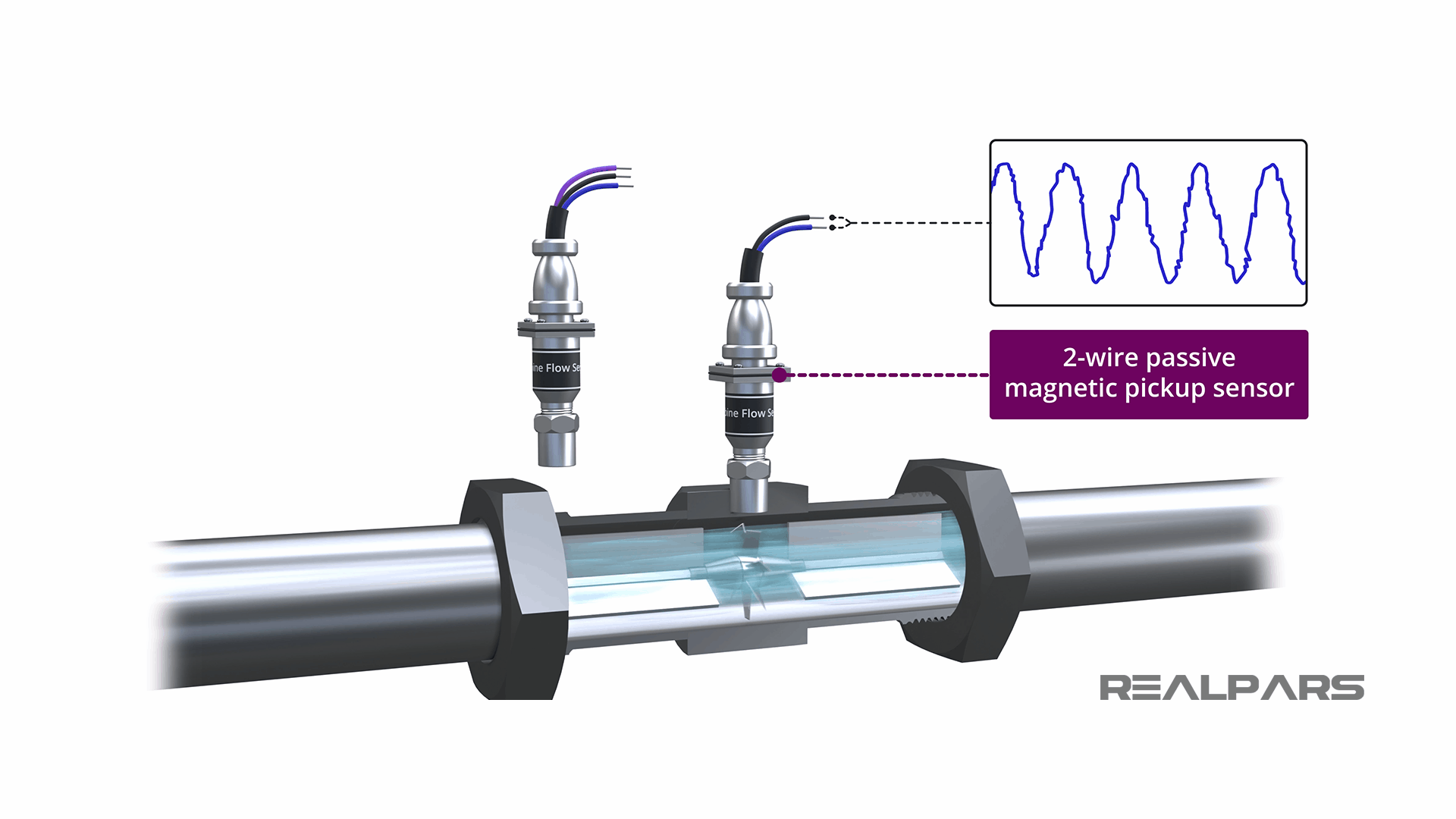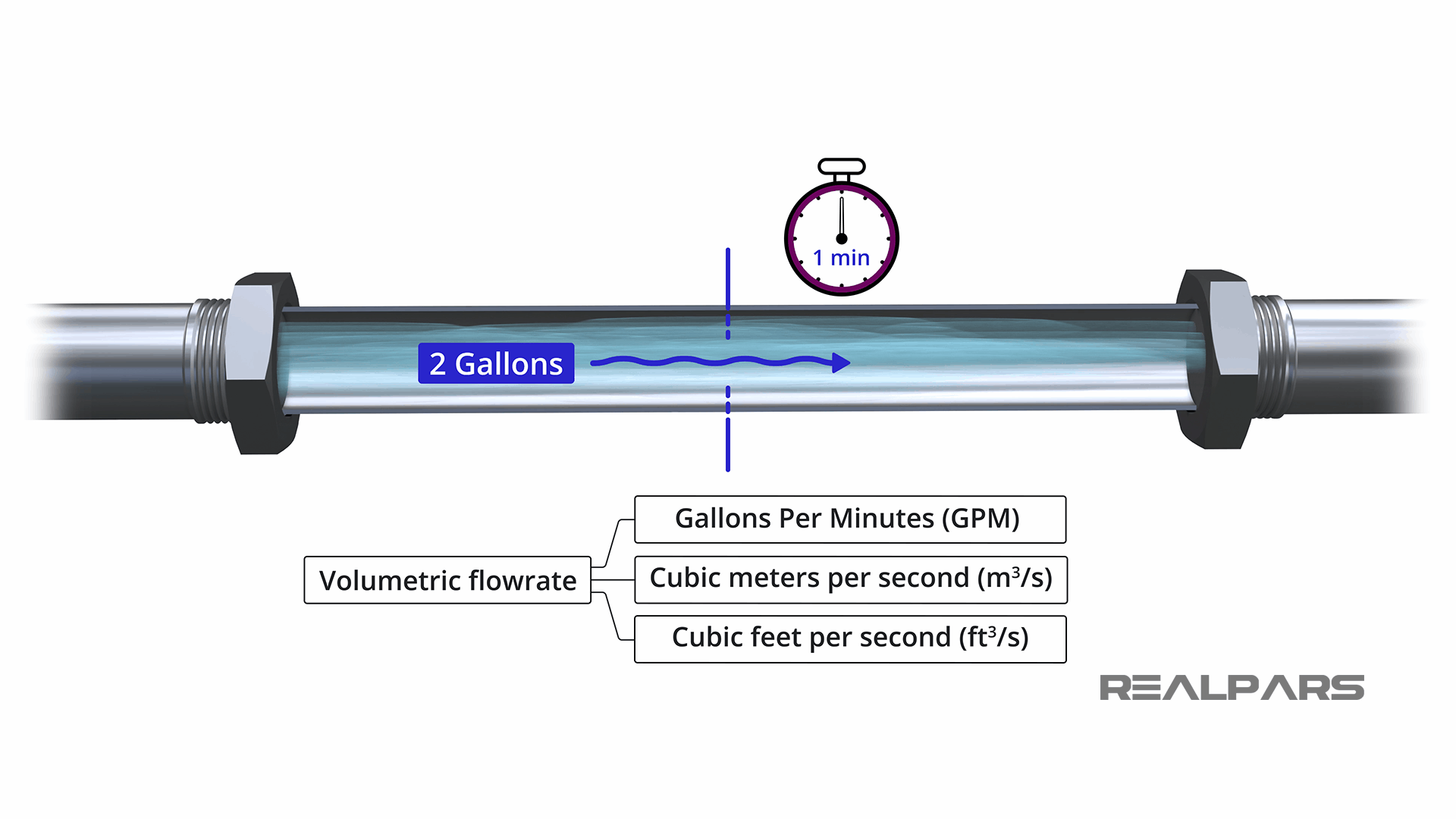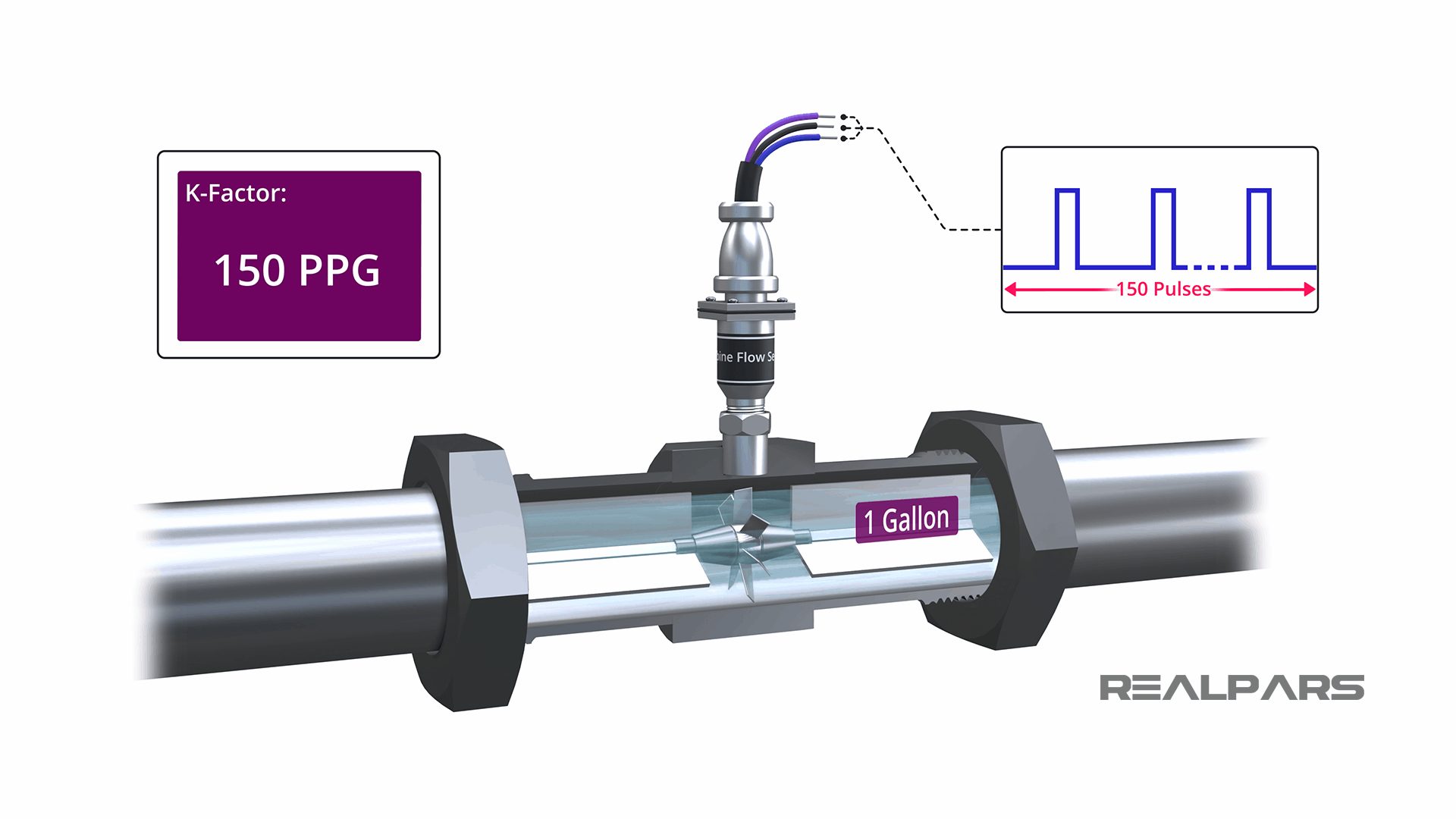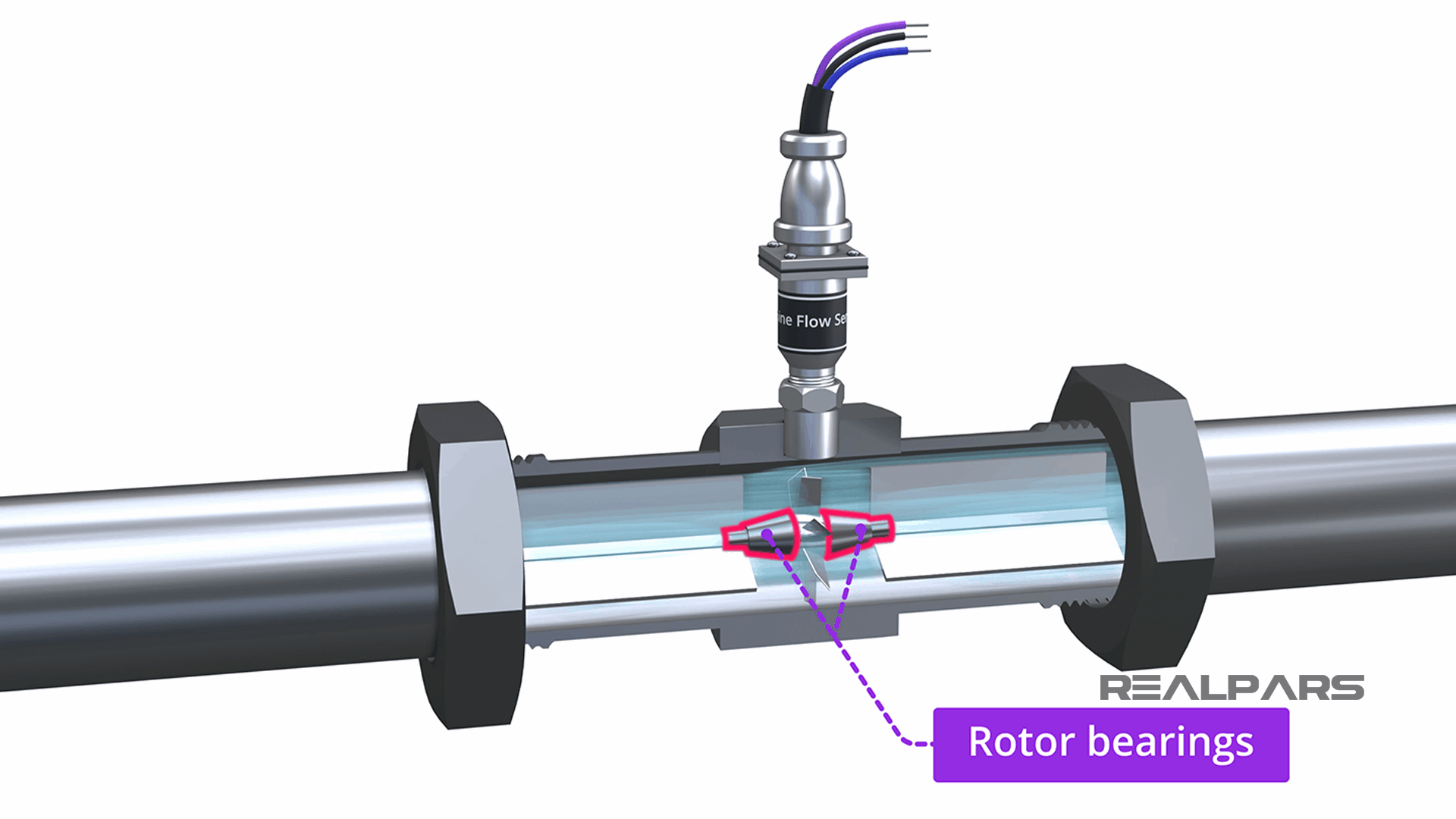Turbine Flow Meter Explained | Operation and Calibration


In this article, we’re going to discuss a very common flow measuring device called a Turbine Flow Meter.
Depending on who you talk to, a Turbine Meter has one or two major parts. Some will tell you that the Turbine Meter has only one part: the Mechanical component.
Others will refer to a Turbine Meter as having 2 parts: the Mechanical component and the Electrical component.
In this article, we’ll consider the Turbine Flow Meter as a 2-part device.
Alright… let’s go.
How does a turbine flow meter work?
First of all, let’s talk about how a Turbine Flow Meter works.
A Turbine Flow Meter is inserted in a pipe directly in the flow path.
The mechanical part of the Turbine Flow Meter has a turbine rotor placed in the path of a flowing stream.
The only moving part of the Turbine Meter is the mechanical rotor. The rotational speed of the rotor depends upon the flow velocity. The rotor blades are usually made of stainless steel.
As the rotor spins, the passage of each rotor blade past a pickup point will generate an electrical pulse.
The electrical pulses are created in different ways depending upon the rotor blades themselves and the pickup unit characteristics.

Magnetic pickup sensor
In most Turbine Flow Meters, magnets are fitted to the blades, and a magnetic pickup sensor is used to create the pulses.
The higher the rate of flow, the faster the rotor turns and the greater the number of pulses.

The shape and the voltage level of the generated pulses depend entirely upon the type of pickup unit used.
1) The electrical pickup sensing device could be a simple 2-wire passive magnetic pickup producing an AC-type output.

2) The electrical pickup sensing device could be a 3-wire active device such as a Hall Effect sensor that produces cleaner and more uniform square wave pulses.

Volumetric flowrate
As we said earlier, the turbine rotor will turn at a different speed depending upon the fluid flow velocity.
Fluid Velocity is a measurement of the distance a particle of a substance traveled per unit of time. Typical velocity units are feet per second or meters per second.
Fluid Velocity plays a very important role in the operation of a Turbine Flow Meter, but in most applications, a Turbine Flow Meter is used to measure Volumetric Flowrate.

Volumetric Flowrate indicates the volume of fluid that passes a point in a unit period of time.
If you could count the number of gallons of liquid flowing past a certain point in one minute, you would be able to state the Volumetric Flowrate.
Volumetric Flowrate is expressed in units such as:
– gallons per minute (GPM)
– cubic meters per second (m³/s)
– cubic feet per second (ft³/s)

The K-Factor
OK… so now we’ve reviewed Fluid Velocity and Volumetric Flowrate, let’s talk about how a Turbine Flow Meter is used to measure Volumetric Flowrate.
When you buy a Turbine Flow Meter it should arrive with a tag or a calibration certificate declaring its K-Factor.
This K-Factor is unique to each and every Turbine Flow Meter and is determined by the manufacturer.
As we discussed earlier, the Turbine Flow Meter will generate pulses and the pulse rate depends upon the fluid velocity.
The unique K-Factor declares the number of pulses that will be generated for every unit of product passing through it.
K-Factor will be expressed in terms of the number of pulses produced such as 150 pulses per gallon.

Flow meter frequency
Let’s assume we are using a Turbine Flow Meter to measure flow in gallons per minute (GPM).
This Turbine Flow Meter has a K-factor of 3 pulses per gallon.
Recall that the unit for Frequency measurement is Hertz. 1 Hertz is equal to 1 cycle per second.
With that in mind, we say that the Turbine Flow Meter produces a frequency of pulses per second which we express as Hertz.
If we have a K-Factor of 3 pulses per gallon, the output frequency at a Volumetric Flowrate of 200 gallons per minute (GPM) is 10 Hertz or 10 pulses per second.
If you are wondering where we derived these values, we’ve included a very handy K-Factor Calculator for you to use.

We can connect the Turbine Flow Meter to a PLC Frequency input card. The input frequency now represents the Volumetric Flowrate.
If we are troubleshooting or performing loop calibration, we can use a Calibrator with a variable frequency output to simulate the Turbine Flow Meter.

A Typical field control loop
Here’s an example of a Turbine Volumetric Flowrate measurement loop.
A 2-wire passive sensor pickup unit produces AC-like pulses which are conditioned by an amplifier before being sent to a High-Speed Counter PLC input module.

Installation of a turbine flow meter
Typical installation requires 10 pipe diameters upstream of straight pipe and 5 pipe diameters downstream.

The Turbine Meter can only be used in clean, lubricating fluid because suspended particles can easily damage the device.
The turbine rotor must be positioned in the exact center of the flow and laminar flow is critical often requiring straightening vanes.

The downsides of using a turbine flow meter
Even though they are one of the most accurate Volumetric Flow Meters in use today, they do have some downsides.
1) The K-Factor is not always consistent across the entire flow rate measurement range. Turbine Flow Meters are not accurate at very low flow rates.

2) Viscosity is an issue as thicker or thinner fluids can change the rotor speed and affect the meter’s calibration.
Keep in mind that the Turbine Flow Meter K-Factor was determined at the factory using a specific set of parameters.

3) They are not recommended for steam. As with other mechanical devices, the rotor bearings wear out.

Where are turbine flow meters used?
In What industries are Turbine Flow Meters used? Considering their popularity, a better question might be in What industries are Turbine Flow Meters not used?
You will find Turbine Flow Meters in oil and gas including fracking, water and wastewater, chemical, power, food and beverage, aerospace, pharmaceutical, and pulp and paper.

We recommend checking the following related articles, if you haven’t already, to have a better understanding of Flow Meters, Calibration, and Transmitter Loops:
What is Sensor Calibration and Why is it important?
What are 2-wire and 4-wire Transmitter Output Loops?
Summary
OK… let’s review:
– A Turbine Flow Meter is inserted in a pipe directly in the flow path and has a turbine rotor placed in the path of a flowing stream.
– The higher the rate of flow, the faster the rotor turns and the greater number of pulses generated by an electrical pickup.
– In most applications, a Turbine Flow Meter is used to measure Volumetric Flowrate.
– Every Turbine Flow Meter has a unique K-Factor stating the number of pulses that will be generated for every unit of product passing through it.
– There are several important issues to consider when installing a Turbine Flow Meter.
– Considering their popularity, there are very few industries where Turbine Flow Meters are not used.
If you have any questions about the Flow Meters or about Transmitters in general, add them in the comments below and we will get back to you in less than 24 hours.
Got a friend, client, or colleague who could use some of this information? Please share this article on turbine flow meters explained.
The RealPars Team
Learn from Industry Experts
With a 7-day trial, then €25/month


